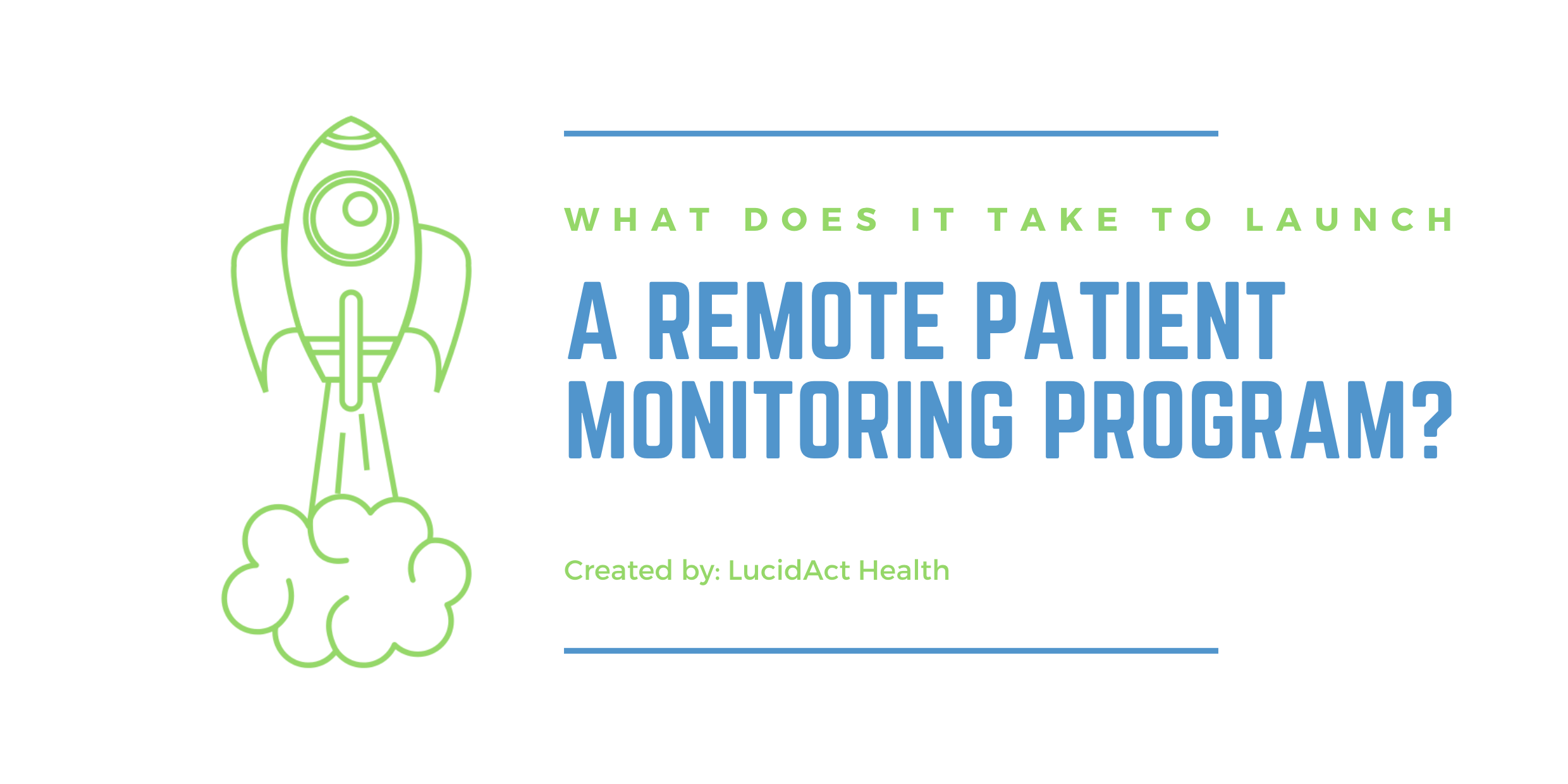Challenges to launch a Remote Patient Monitoring Program?
Because we service healthcare facilities throughout the U.S., from rural hospitals and long-term care facilities to private practices, our team at LucidAct Health thoroughly understands the most common challenges related to RPM implementation and management.
The Most Common Challenges Facing Facilities That Want to Launch Remote Patient Monitoring Are:
Understanding how to leverage the three new CPT reimbursement codes to maximize revenue
Choosing and selecting the right RPM devices
Making data easily accessible to providers and the entire care teams
Defining, implementing, and managing internal RPM workflows
Prior to plunging into RPM implementation and management, decision-makers and their care teams should have a deep understanding of the three reimbursement codes that Medicare added for Telehealth and Care Coordination Services provided in the patients’ home by physicians. This will allow physicians to not only leverage the new codes to maximize patient care for their chronic care patients, but will also allow them to optimize reimbursement for their practices.
Reimbursement Structures For The Three Codes Added To Medicare RPM:
99453: One Time Reimbursement for Initial Setup and Patient Education on the Use of Telehealth Equipment (Average National Reimbursement $19.46)
99457: Monthly Reimbursement for a minimum of 20 minutes of Staff/Physician Interactive Communication with the Patient (Average National Reimbursement $51.54)
99454: Monthly Reimbursement for Provision of Monitoring Equipment for the Patient (Average National Reimbursement $64.15)
Physicians and care teams working with LucidAct have circumvented these challenges and more because our 5-step system makes onboarding clients and providing RPM services simple.
In Order To Receive RPM Reimbursements Our Clients Must:
Identify appropriate patients for remote patient monitoring services
Enroll eligible patients (with their consent) into the Chronic Care Management process
Order and provision appropriate RPM devices for the patient. We help you choose the easy-to-use devices that meet RPM requirements with a simple, and well-automated RPM implementation
Implement highly relevant reminders, alerts, and notification protocols for each patient, based on the specific goals set by the physician and their care team. Beyond notifications, we use the preferred communication channels to engage the providers and patients in collaborative efforts to respond to different situations quickly.
Provide 20 minutes (at least) of educational communication with patients who enroll in the CCM management process
To learn more about how our processes can help your practice implement RPM program within 2 weeks and manage for your patients, reach out to us at info@lucidact.com or schedule a call now.


